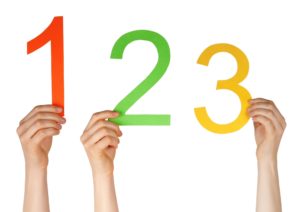Rule of three is a powerful communication device.
Rule of three is so awesome that you can use it in multiple ways in your speeches.
You can use it for written content as well. In fact, rule of thirds concept is used in photography.
But we’ll only focus on its usage with respect to communication :).
Rule of three is used to present an idea or data in three parts to make it easy for the listener to follow and/or remember.
In my speeches, I use it left, right, and center.
You just saw the use of rule of three in action.
Why three?
Well, two seems less to make an impact and four seems more to remember.
There should be a scientific reason.
Some Harvard study should be there right?
I say, forget about science and research because I have used this more than any other device for my speeches and writing.
And rule of three always works like a CHARM.
Many might know what I just explained.
But what many don’t understand is the use of rule of three to create humor in speeches.
This is how it works. I’m assuming you understand basics of a laugh line.
Let us say that we have three items—part 1, part 2, and part 3. “Items” can be sentences, words, phrases, or a combination of these.
In order to create humor, the first two parts should be something that the audience is expecting and the last part should be something that the audience is not expecting.
In other words, rule of three for humor creation can be interpreted as expected, expected, and unexpected.
You can use expected, expected to lead them in one direction and use the unexpected to create the punch line.
Enough of theory…
Let’s look at the speech clip below.
I’m going to make this super easy. The structure of a laugh line is:
Premise + Pause + Punch + Pause = Laugh
I’m presenting the above example in context of the structure of a laugh line.
1. Premise
a) Is it true or at least believable? Yes, check the following sentence. It seems to be true: Have you ever realized, the things you really really want always cost a little more money?
b) Lead them in one direction: Think about it. That beautiful house, that beautiful car
2. Pause
3. Punch line: That beautiful girl
4. Pause
Rule of three is used when transitioning from Lead them in one direction to Punch line.
You can use expected, expected to lead them in one direction and use the unexpected to create the punch.
So in our example, ‘that beautiful house,’ ‘that beautiful car’ is the expected, expected that leads them in one direction and ‘that beautiful girl’ was the unexpected that created the punch line.
In summary, rule of three is a communication device used for structuring the sentences in three parts, so that it is easy for the listeners to follow your speech.
It is also a powerful to create humor. Keep the first two parts as something expected by the audience and twist the third part to add an element of surprise which results in laughs.
Apply rule of three, deliver the speech, and entertain the audience!
